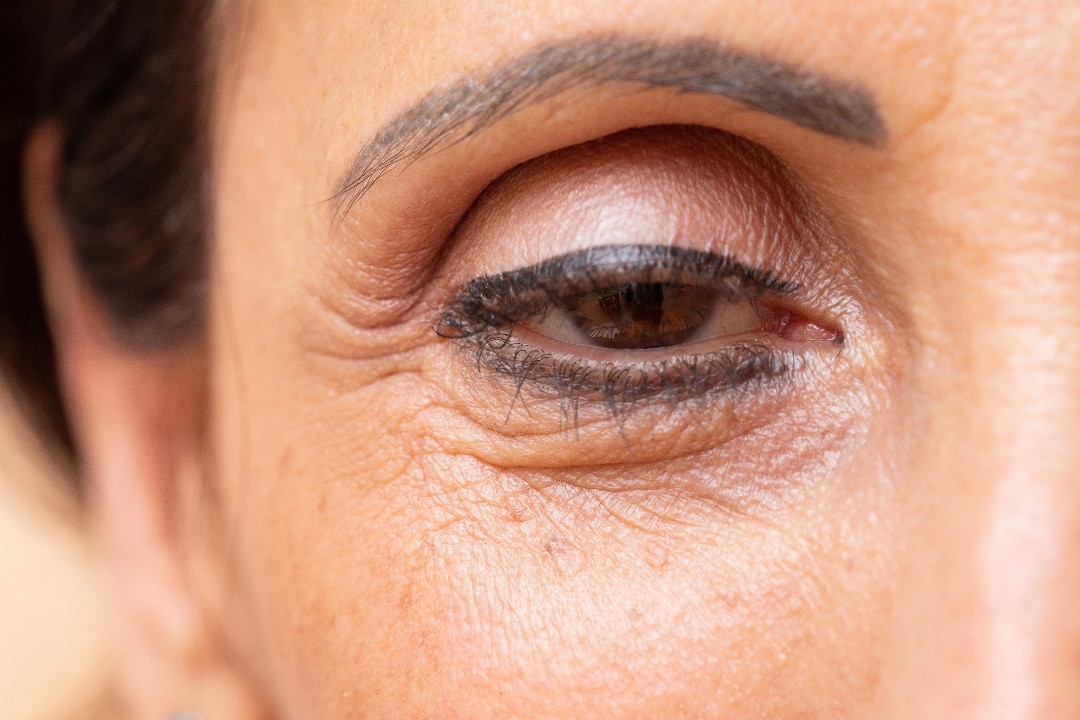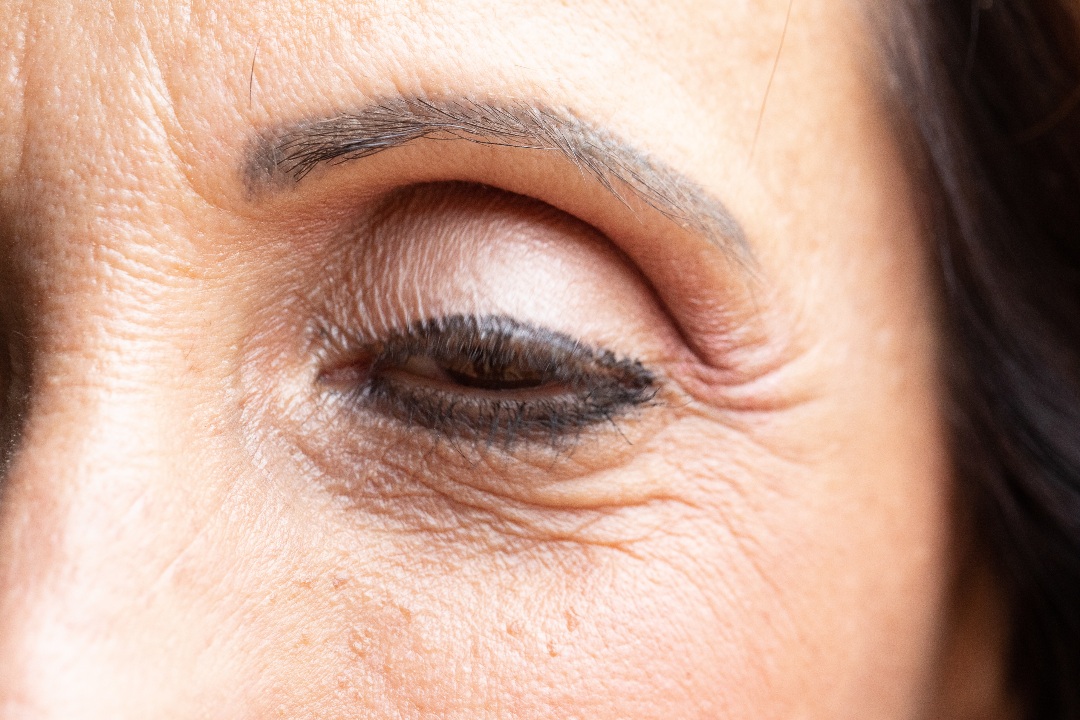Are Drooping Eyelids Compromising Your Vision? We Can Help.
You probably don’t think much about your eyelids. Most of us barely notice that we even blink.
But these simple structures have a huge role to play in maintaining healthy eyes and strong vision. Almost 30,000 times per day, your eyelids blink to flush out debris, keep your eyes lubricated, supply the cornea with oxygen, and even (according to a study from Osaka University) help your brain get a split-second refresh.
As a matter of fact, at two tenths of a second per blink, you probably spend around 5-7 percent of your waking hours with your eyes closed!
But as important as eyelids are, you can definitely have too much of a good thing. Here, we’re talking specifically about drooping eyelids, also known as ptosis.
What’s the Problem with Drooping Eyelids?
When most people think about their eyelids starting to sag, they’re probably most worried about their outward appearance.
While it’s true that droopy eyelids can make someone appear older and more tired, the potential consequences are not merely cosmetic.
In cases where there is severe drooping or sagging around the upper eyelids, your peripheral vision may start to become compromised—especially in the upper and outer areas of the visual field.
Depending on the cause and severity of your drooping eyelids, some possible complications or difficulties might include:
- Difficulty reading
- Inability to safely operate a motor vehicle
- Needing to tilt your head back to see forward
- Eye pain
- Excessively dry or watery eyes
- Tension headaches or migraines (due to needing to constantly tense your forehead muscles to increase your visual field)


What Caused the Problem?
In most cases, the main cause of ptosis is simply aging.
As we get older, the skin (including the eyelids) starts to stretch out and loses its elasticity. On top of that, the muscle responsible for lifting the upper eyelid—the levator palpebrae superioris, to be specific—can also become overstretched and weakened over time, losing its ability to keep the eyelid fully raised at rest.
Furthermore, fatty deposits can build up behind the eyelids, which may cause them to sag even more.
That said, there are rare cases when ptosis may be caused by something other than natural aging. This could include trauma to the nerve, various neurological or neuromuscular disorders, diabetes, stroke, or a brain tumor.
It’s important to get your droopy eyelids checked by a doctor, especially if they are causing vision problems or associated with symptoms such as headaches. Not only do you want the eyelid problem itself fixed, but you also want to make sure you are properly screened for potential underlying conditions.
Restoring Your Eyelids (and Your Vision)
It is possible that, if your drooping eyelids are still a relatively minor problem, you may be able to benefit from various home therapies such as homemade lotions, cucumbers, or dietary changes. You can read more about some of these strategies in one of our previous blogs.
However, if these are not sufficient for your situation, we may instead recommend an eyelid lift surgery, also known as a medical blepharoplasty.
Before we begin, we’ll examine your eyes carefully to ensure that you’re a good candidate for the procedure. This includes taking multiple photographs of your eyes and eyelids from different angles, as well as testing your peripheral vision.
The surgery can be performed right from our office in Zeeland; no need to deal with the hassle or expense of a hospital stay. Your eyelids will be numbed, and then the surgeon will carefully remove excess skin, muscle, and possible fat in order to tighten the lid. Additionally, we may need to repair the levator muscle to better support the lid.
The entire procedure typically takes one to two hours. After that, you can recuperate at home.
What Can I Expect from Recovery?
Please try to avoid rubbing your eyes after surgery, and don’t smoke.
Through the first night, apply ice packs to your eyes for about 10 minutes every hour. We know you’ll be exhausted, but power through! We have faith in you.
For the next day, you don’t have to ice every hour. Four to five times per day should be sufficient.
Mild bruising and swelling may last a few days to two weeks. Other possible temporary side effects include watery eyes, light sensitivity, blurred or double vision, and eye pain. These are normal, but please contact us if pain or vision problems become severe.
You should try to rest as much as possible during the first week, and avoid any heavy lifting, strenuous activities, or swimming.
For eyewear, we prefer that you don’t use contacts for at least two weeks following the procedure. Put on a good pair of sunglasses when you go outside to protect your eyelids from sun and wind.
Avoid any painkillers, medications, or supplements that are associated with an increased risk of bleeding. This includes aspirin, naproxen, and ibuprofen! If needed, acetaminophen (Tylenol) is a safer choice.
We will schedule any additional follow-up appointments that are necessary to determine your progress with healing, as well as provide detailed instructions for your recovery at home. That said, don’t be afraid to call us at any point if you have further questions or concerns.
If drooping eyelids are impairing your vision and reducing your quality of life, don’t wait to get the care you need. Contact the Sight Eye Clinic at (616) 772-2020 to schedule an appointment, or complete our online contact form to have a member of our office staff reach out to you.
